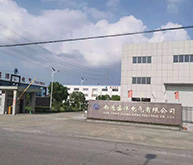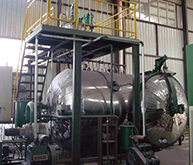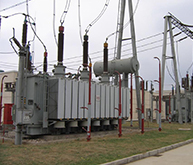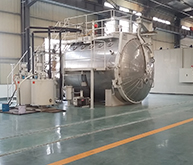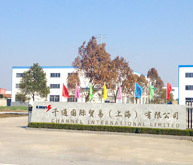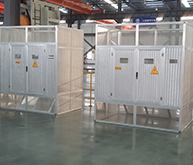What is Dry Type Transformer?
Dry type transformer never uses any insulating liquid where its winding with core be immerged. Rather windings with core are kept within a sealed tank that is pressurized with air. Rather windings with core are kept within a sealed tank that is pressurized with air.
What is Inrush Current?
The inrush current is a current several times of the electrical device's full load current drawn when the device is first turned on. During this period, the transient current can flow for several cycles before reaching its steady state current. Inrush current is rated at number of times in transformer. Transformers usually have an inrush rating of 8 to 15 times. For very small transformers, the inrush can go up to 25 to 40 times.
What is Exciting Current?
After the transformer is energized, a small current flows through its winding. This current is known as exciting current.
Can a Transformer be Connected Reversely?
Yes, a transformer can be connected reversely. However, the output voltage will be less than the rated voltage due to the compensation factor of the windings.
Is it Possible to Connect a Single Phase Transformer to a 3 Phase Supply?
Yes, connect the two primary leads of the single phase transformer to any two wires of the 3 phase supply. This will cause unbalance load on the 3 phase supply. It is also commonly known as 2 phase to single phase in Singapore.
Can a Transformer Rated at 60Hz Operate on a 50Hz Service?
A transformer designed for 60Hz cannot operate on a 50Hz service as more losses will occur and lead to higher temperature rise and shorter life span. On the contrary, a transformer rated 50Hz can operate on a 60Hz service.
What is Voltage Regulation?
Voltage regulation is the ability to provide constant secondary voltage given a constant primary voltage over a wide range of load conditions.
Voltage regulation is defined as:

Where
VNL: No-load voltage
VFL: Full-load voltage
What is Intermittent Rating?
A transformer can be operated in continuous or intermittent mode. When a transformer is operating in an intermittent duty cycle, the maximum power can be increase significantly during that short period of time.
Intermittent power can be calculated using the following formula:

What is the Effect of Using a Transformer in High Altitude?
Dry type transformers used above 1000 meters require derating due to the reduced cooling capacity of the less dense air. The capacity of the transformer should be derated 0.3% for every 100 meters above 1000 meters.
Why are Transformers Rated in KVA Not KW?
Generally, there are 2 kind of losses in a transformer; Iron losses and copper losses. Since iron losses depend on voltage and copper losses on current, the total losses depend on voltage and current, and no power factor is involved. Transformers are rated in kVA as kW would include power factor.

